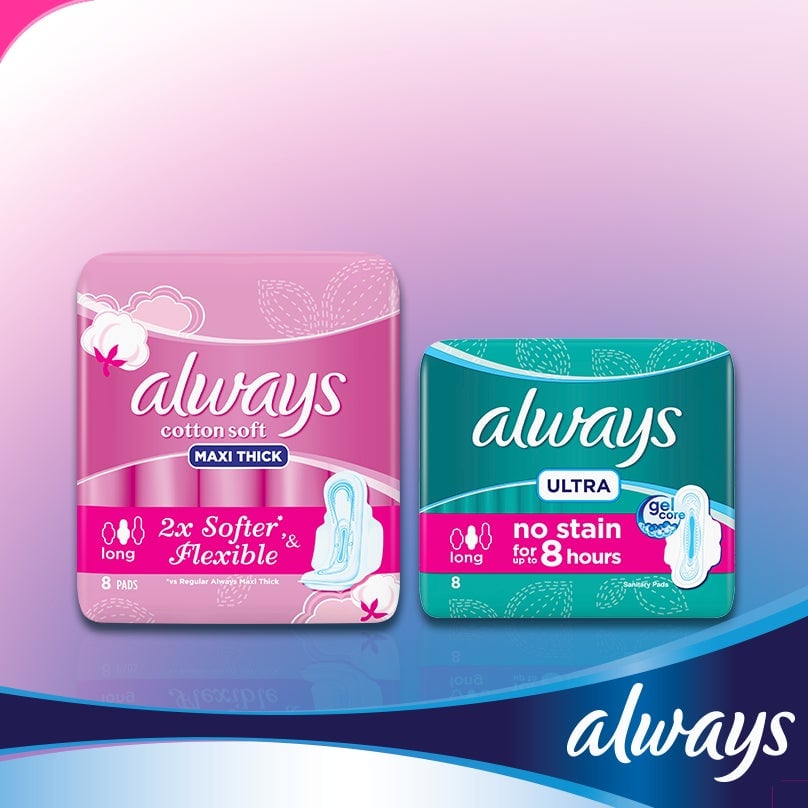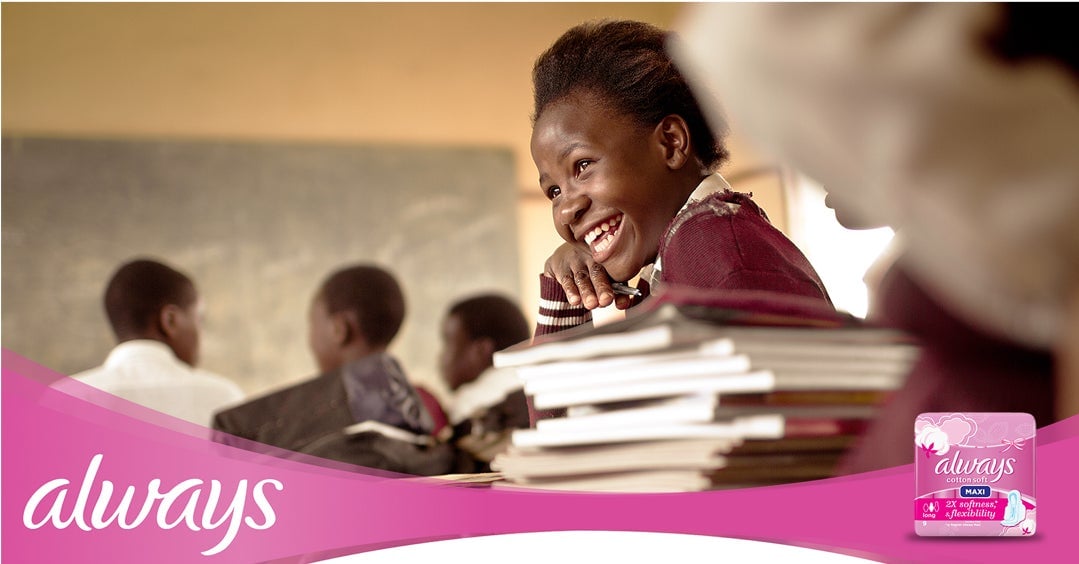The story of how Kenyan women are bringing P&G to task over the Always “burning pads” saga
Last February, Dr. Njoki Ngumi, a Nairobi-based physician and filmmaker, noticed a trending hashtag on her Twitter timeline. Hundreds of women were sharing horror stories of their experiences with Procter & Gamble’s flagship menstrual pads, Always, under the hashtag #myalwaysexperience.


Last February, Dr. Njoki Ngumi, a Nairobi-based physician and filmmaker, noticed a trending hashtag on her Twitter timeline. Hundreds of women were sharing horror stories of their experiences with Procter & Gamble’s flagship menstrual pads, Always, under the hashtag #myalwaysexperience.
One of the first tweets in the thread was by Kenyan activist, Scheaffer Okore, and talked about the huge & painful rashes, itching, severe burning sensation and unpleasant odor that typified her experience using Always pads.
As Ngumi scrolled through the hundreds of stories shared under the hashtag, her interest, turned from curiosity to surprise then to disbelief. “I had been using Always for more than two decades—and I assumed that these symptoms, some of which I had, were a normal part of life of using pads.”
She wondered how pervasive the issue was, if she as a medical doctor had always taken these symptoms to just a normal part of having one’s period. For decades, a section of women in Kenya using Always had assumed that the issue was their own period, their own flow, their bodies—everything, but the pads that they were using.
Awareness of menstrual issues is extremely low in Kenya as monthly periods have always been discussed in hushed tones, with boys being sent out of class whenever the topic is raised leading to girls developing a sense of shame around it. This perhaps explains why the average Kenyan woman might not have wanted to discuss vaginal itching, burn or odor, especially if she believed it was her own body at fault. P&G and its flagship feminine hygiene brand, Always, was one of the first mass market pads in the Kenyan market and the only one easily available countrywide dating back to 1992 when it launched and developed an unparalleled market dominance. As such, even when individual women experienced issues, for a long time they didn’t have anything else with which to compare their bad experiences given Always’ dominance.
Most other pad options came into the country only in the recent past and still have limited market share. In 2015, Always still accounted for 65% of menstrual hygiene management products in the Kenyan market and still has the largest distribution network throughout the country.
Kenyans called all sanitary pads “Always”, in the same way, they called all margarine, Blue Band, because this was what they grew up knowing. It’s worth remembering though for many, menstrual pads are still a luxury with 65% of girls in the country unable to buy any brand of pads. Even Always’ lowest priced eight-pack of pads retailing at 50 cents a pack is still very expensive in a country where 37% of the population lives on less than $1.25/day.
Once the online and social media discussions began, Kenyans were not going to be silenced. As people started triangulating information, they realized Always pads in developed countries did not have the same effect. Images started to be shared as KOT’s (Kenyans on Twitter) including those living in other countries started buying and sharing pictures of what Always pads in their countries look like. A common refrain was, “I bought Always when I was in the US or UK and they definitely did not burn me there.” At first, Always tried to downplay women’s stories, counting them as isolated incidences but as the hashtag continued to trend, it became clear that P&G had a looming PR disaster at its doors.
The making of a pad
Modern day disposable menstrual pads would hit the mass market in the 1920s when the American multinational, Kimberley-Clark launched their Kotex brand. It was a post world war I invention that would be made from a material called Cellucotton that Kimberley-Clark had used in bandages. The material was made of wood pulp and was five times as absorbent as cotton bandages but much less expensive. In 1983, P&G would introduce Always to the US in 1983 then moving globally the following year.

Pads are identified by the material inside them (the absorbent core) and the top-sheet which prevents liquid from rising back to the surface after getting into the core. There are two main types of cores – one which has fluff-pulp inside that is best defined as a cotton-like material, but is not cotton given cotton’s long fiber length and low absorbency.
Though most pads today are made in China, almost all the fluff-pulp in such pads is imported from the US as it comes from two species of trees that mostly grow in the Southern coast of the US—loblolly and slash pine. The second type of core for pads is much thinner. While also containing fluff-pulp, this core feels more like a thick paper-towel than cotton fabric and has super absorbent gel embedded inside.
When it comes to the top layers of pads, there are two main products used – one is perforated polyethelene (PE) films with a plasticy feel and the second is non-woven that while also made from plastic, feels like reusable cloth bags and is used in brands such as Kimberley-Clark’s Kotex. Non-woven technology only came into being in the late 80s and early 90s with earlier generations of PE films being considered an aged technology. Though Always uses PE films for most of its pads worldwide, there is a marked difference in the look, feel and breathability of different versions.
Quartz examined close-up images of pads available in different markets in mid 2019. Always Maxi Size 2 Super pads (without wings) purchased in both US and Germany use a PE film that has tiny perforations in between larger apertures, lending it a more cloth-like appearance.
In Africa, in 2019, the sub-brand Always Maxi used different PE film topsheets across the continent. Specifically, the one that was in use in Kenya resembled that used in pads in the US/Europe back in the 1980s and 1990s, not the ones currently used in those parts of the world. Whisper (India’s analog of Always) Maxi Nights Pads (with wings) purchased in India had an identical topsheet to that in Kenya.
The fallout
Though P&G initially tried to deny the claims there was an issue with the pads for a certain segment of women, the social media movement gained traction. One of the resources that was shared by those using the tweet at the time was a 1996 study in the Canadian Medical Association Journal that looked at the link between contact dermatitis and the use of Always pads.
The study assessed 28 women experiencing vulvar itching and burning, often associated with eruptions resembling contact dermatitis, of the vulvar and perineal surfaces after using Always pads. Twenty-six reported symptoms disappeared after they stopped using that brand of sanitary napkin. Seven women who later used the same brand again reported a recurrence of the vulvar irritation. With evidence mounting that this was not a new or unknown issue, Kenyan women sought answers. Was the PE film on Always pads in developing markets the reason behind the reports of contact dermatitis, vulvitis, and severe irritation? If the pads had such an issue decades prior in an even colder climate, couldn’t this explain why this issue was still being felt in much warmer climes?
As Always executives scrambled to avert a PR disaster in 2019, they called for a closed door meeting. Dr. Ngumi shared her statement ahead of time. Audio retrieved from meetings even as recent as January 2020 show the denial has continued for the most part with Always not wanting to claim responsibility for any of the issues the customers addressed—likely fearing litigation, but they are increasing their product offerings in the Kenyan market.

Always Kenya recently said it has upgraded the quality of all their PE films on pads in the Kenyan market, though this would be difficult to ascertain except by users. According to Wanjiru Nguhi, who attended the last roundtable discussion on Jan. 17 this year and tweeted about it , “I don’t think they are addressing the key issue. I have the privilege of moving to other premium pads, but what about other women who can only afford the lowest priced version?”
The way forward
In a statement to Quartz Africa from Always Kenya brand manager Ivy Kimani, “The hashtag on Twitter drew our attention to women whose expectations we didn’t meet. We believe strongly that we must serve the needs of all Kenyan women and not only the ones whose needs we were fulfilling.”
Perhaps, victory does not have to come in the form of P&G accepting that they were at fault. There is a lot to celebrate from the movement. Always put together an ad talking about the hashtag, albeit one that was seen by activists as insincere given the lack of acknowledgement of being at fault. It does reveal though the impact the online campaign had on P&G.
Founded in 1837, Cincinnati, Ohio-based P&G has in close to two centuries, grown to become one of the world’s largest fast moving consumer goods (FMCGs) companies worldwide with annual revenues of $67 billion in 2019 and 97,000 employees. It prides itself in seeing its customers as women. In 2017, P&G launched a gender equality campaign in addition to an #EndPeriodPoverty program that was launched a decade earlier that has resulted in the donation of over 40 million pads to school girls in need around the world. The ongoing issue in Kenya is at odds with its global movement.
A P&G social media influencer campaign also faced backlash and was seen by Kenyan women as window-dressing, rather than addressing the mass-market issue for women who cannot afford the premium products. All these are signs though that while not explicitly facing the blame for what happened to women who had issues, their complaints are causing some ripples at P&G. Discussions are also happening on public forums on menstruation with women sharing their experiences. This will go a long way in demystifying periods and in tackling menstruation illiteracy that thrives in a shroud of secrecy and silence.
The fact the hashtag moved beyond Kenya’s borders, means Kenyan women have agitated for improvements that will impact women in other developing countries who will share their own #myalwaysexperience.
For other brands watching, it might also make them realize African customers will demand better products or move to the competition if their voices are not heard. In the words of Dr. Ngumi, “Not all activism has to result in conversion.”
Sign up to the Quartz Africa Weekly Brief here for news and analysis on African business, tech and innovation in your inbox